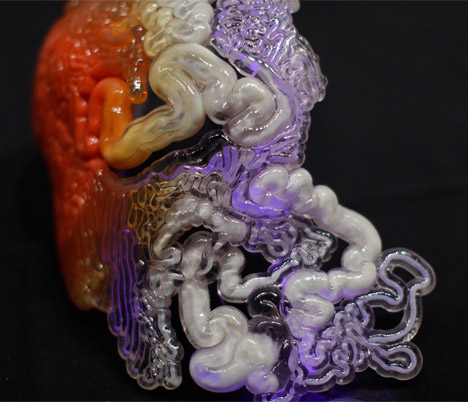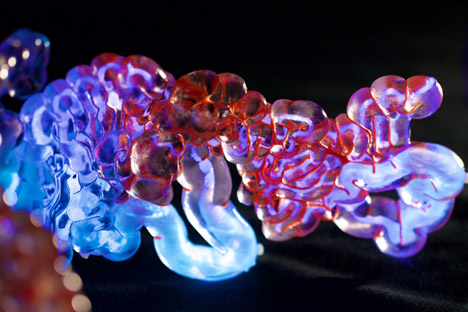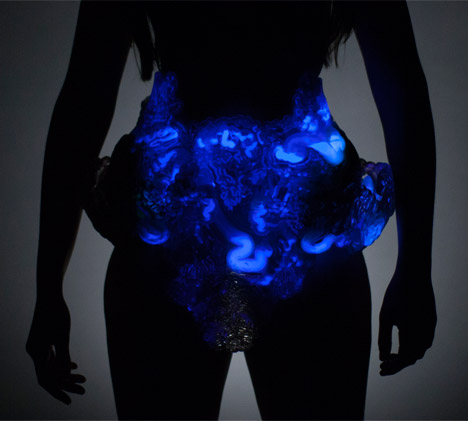Neri Oxman 3D prints "photosynthetic wearable" to host living organisms
Designer and researcher Neri Oxman has successfully 3D-printed one of her "wearable skins" and filled its hollow tubes with a bacterial luminescent liquid to represent how it could host photosynthetic organisms (+ slideshow).
During a TED talk in Vancouver earlier this year, Oxman demonstrated that she and members of the Mediated Matter group at MIT Media Lab were able to produce Mushtari – one of four wearable pieces in her Wanderers range.

The wearable structures in the collection were designed to facilitate synthetic biological processes that might one day allow humans to travel to and survive on other planets.
Using triple-jet technology supplied by 3D-printing company Stratasys, the team was able to create the sculpture in one piece from a combination of different plastic materials that produced various densities and transparencies.
"This is the first time that 3D-printing technology has been used to produce a photosynthetic wearable piece with hollow internal channels designed to house microorganisms," said Oxman.

The structure's series of channels are designed to allow liquid to flow through. The idea is that they could house photosynthetic organisms, which would generate energy from light and somehow pass this onto the garment's wearer.
"Inspired by the human gastrointestinal tract, Mushtari is designed to host synthetic microorganisms – a co-culture of photosynthetic cyanobacteria and E. coli bacteria – that can fluoresce bright colours in darkness and produce sugar or biofuels when exposed to the sun."
"Such functions will, in the near future, augment the wearer by scanning our skins, repairing damaged tissue and sustaining our bodies, an experiment that has never been attempted before," she added.
The 58 metres of fluid channels that are wound within the structure have an inner-channel diameter ranging from 1 millimetre to 2.5 centimetres.

Translucent and transparent sections of the tubes allow light to penetrate into the interior so the organisms could use it to photosynthesise.
Oxman's team has managed to flow liquid containing cyanobacteria – bacteria that obtain energy through photosynthesis – through a small section of the tubes. The team has not yet demonstrated that the bacteria can photosynthesise while inside the structure, but is continuing to test the compatibility of the printed materials with the microorganisms.
"In the end, it is clear that the incorporation of synthetic biology in 3D-printed products for wearable microbiomes will enable the transition from designs that are inspired by nature, to designs made with and by nature, to, possibly designing nature herself," Oxman said.